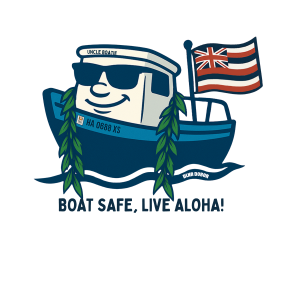Marine Debris
DLNR’s Marine Debris Response Team handles and/or coordinates cleanup of marine debris on DLNR jurisdiction. Hawaii State law generally refers to “marine debris” as to any nonnatural obstruction or public safety hazard. NOAA defines “marine debris” as any persistent solid material that is manufactured or processed and directly or indirectly, intentionally or unintentionally, disposed of or abandoned into the marine environment. Due to limited resources, DLNR prioritizes removal of large obstructions to waterways and navigable waters over smaller types of marine debris, such as microplastics.
General marine debris reporting: Please submit a report here
Information for boaters who discover marine debris in the ocean.
What to do if you discover an abandoned or derelict vessel:
Abandoned and derelict vessels in ocean waters and on the shoreline:
– Email a photo and location description with your contact information to: [email protected]
– You can also use the Marine Debris Report Form.
Abandoned vessels on land:
-Contact County authorities where the vessel is located to submit a report. DOBOR does not have jurisdiction over vessels that are abandoned on land.
Pollution impacts the water, marine life living in it and is a potential threat to human health. While one boat on the water may not seem significant, multiply the waste generated by thousands of boats and the effects are staggering. Most of these pollutants stem from Marine Debris, Sewage, Vessel Maintenance and Cleaning.
MARINE DEBRIS
Garbage, especially in the form of plastics, ruin the natural beauty of the marine environment and can kill aquatic life through entanglement or ingestion. Other types of garbage, including food waste and toxic products, contribute to the depletion of dissolved oxygen, which is necessary for marine plants and animals to thrive.
What you can do:
- Keep trash out of the water.
- Bring everything ashore.
- Separate cans, glass, plastic and paper and take
them to a community recycling center near you.- Report large items at sea and on the shoreline, or dense concentrations of marine debris by using the Marine Debris Response and Removal Report Form.
Report Marine Debris to DLNR via the Response and Removal Report Form
KEEPING SEWAGE OUT OF THE WATER
The Department of Health, Clean water Branch (CWB) monitors Hawaii’s ocean waters on a continual basis for two varieties of indicator bacteria (Enterococcus and Cloostridium perfringens) . These types of bacteria are present in animal wastes, soil and human sewage discharge. Consequently, beach closure days have occurred throughout the State due to sewage spills. According to the Environmental Protection Agency, the microorganisms, nutrients and chemicals that are released into the marine environment when raw or partially treated sewage are discharged may put swimmers at risk for such diseases as Hepatitis A and E. coli infection.
What you can do:
- Use on-shore pump-out stations. DOBOR operates suitable facilities: on Oahu at Ala Wai, Keehi, Waianae and Heeia Kea; on Maui at Lahaina and; on Kauai at Nawiliwili.
- Holding tanks require additives. Read carefully and choose additives that do not contain formaldehyde formalin, phenol derivatives, ammonia compounds, alcohol bases or chlorine bleach.
REDUCING TOXIC BY-PRODUCTS OF VESSEL MAINTENANCE
Proper vessel maintenance is necessary for a safe, smooth-running vessel. However, there are by-products of regular maintenance including motor oil, lead acid batteries and toxic paint to name a few. These materials contain chemicals which can poison fish, destroy coral reefs, threaten marine life and find their way into the food chain, causing potential problems for humans. be careful to dispose of these materials carefully.
What you can do:
- Check with the Harbormasters. Most harbors offer a collection facility. If yours does not, ask for one.
- OIL ~ when changing your oil, wipe up spills immediately and catch old oil in a container for recycling.
- LEAD ACID BATTERIES ~ anyone who sells batteries in Hawaii is required to take your old battery when you buy a new one. The lead cells in your old battery can be recycled to make new batteries.
- PAINT ~ Use the right paint for the job. Check with your marine painting professional and choose the most environmentally friendly one.
REDUCING POLLUTION WHILE CLEANING YOUR VESSEL
Many cleaning products and detergents contain phosphates and heavy metals that can accumulate in fish and filter-feeding marine animals such as oysters and clams which could one day wind up on your dinner table. Today, many products are available that are safer for the environment. Look for the “greener” labels at local marine stores. If you can’t find environmentally friendly products, try these alternatives. They work and save you money, too.
| Detergent and Soap | use vegetable oil or citrus based detergents and soaps instead of petroleum based ones. |
| Bleach | borax or hydrogen peroxide |
| Scouring Powders | baking soda |
| Mildew Removers | paste made of equal parts of lemon juice and salt |
| Window Cleaner | 1 cup of white vinegar in 1 quart of warm water |
| Brass Cleaner | paste made of equal parts of salt, vinegar and water |
| Copper Cleaner | lemon juice and salt |
| Chrome Cleaner/Polish | apple cider vinegar to clean, baby oil to polish |
| Wood Polish | (inside) almond or olive oil |
This page was last updated on 7/1/24.
